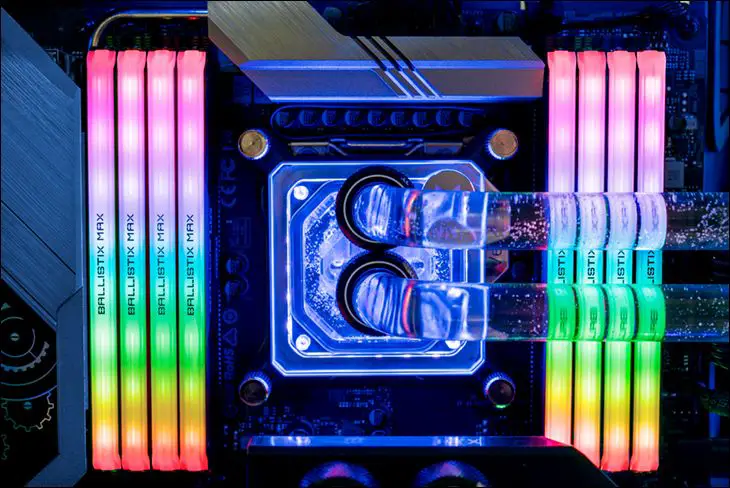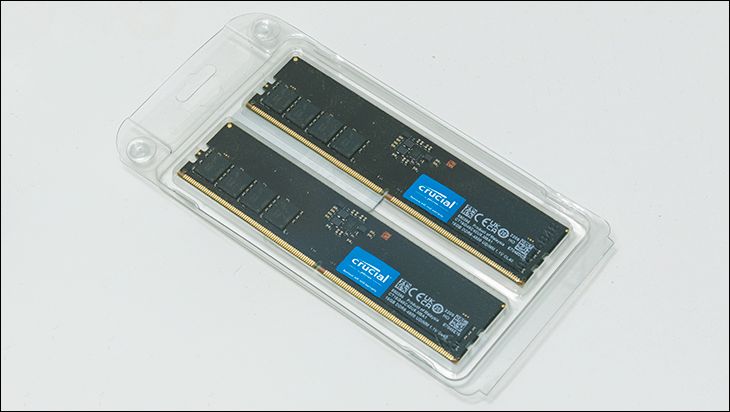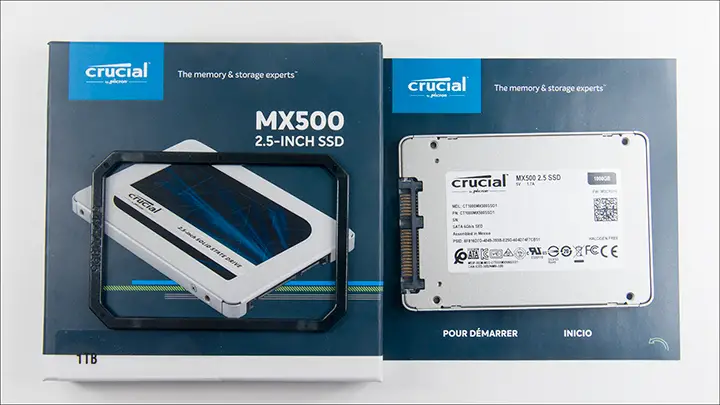![]()
Much like the recently reviewed UD70, the US70’s shipping container hits almost all the key points for us. It is attractive, yet not over the top. It is informative – as it shows and just does not tell you about the drive. It is also compact enough that it is rather easy to transport (and consequently economical to do so). Unfortunately… two things work against it. First the colors are too close to the UD70s to lessen the inevitable confusion when the US and UD 70’s are right next to each other on store shelves. Thanks to a rather less than optimal name for this radically different model, people are already going to be confused over US vs UD nomenclature and having the two boxes also so similar is not a good thing. If there was ever a time for a flaming red box, or similarly different color pallet it was here… or better still a noticeably different model name listed on the box.
![]()
The internal protection is also very similar, at the very least, to the UD70s. It consists of a nice plastic tray that firmly locks the drive in place while it is housed inside the cardboard box. As such, the chances of blunt force trauma and the like damaging your drive before it arrives at your door are rather minimal. Here we have almost zero issues with an entry level, and a premium orientated series recycling the same components. Once again, Silicon Power came so close to getting it perfect. Sadly, Silicon Power is once again not shipping their NVMe drives inside an ESD bag. That is disappointing. These bags cost pennies yet can save a drive, and generally speaking we dislike it when a company penny pinch like this.
The accessories, or more accurately lack thereof, consists of an instruction/warranty pamphlet. You can also download their SP ToolBox if you so choose. That however is all that is included. Considering the relatively low asking price of the US70 versus its main competition, we do not take issue with this. It just is one way in which Silicon Power failed to help distinguish the US and UD lines from one another.
![]()
Moving on. Let us start with the heart and soul of the double sided US70 series: the Phison E16 controller. For those not aware of what the Phison E16 is, a bit of background information is required to ‘get’ the genius of the Silicon Power US70 series. Phison, like most controller manufactures, use a modular ‘building block’ design (think AMD CPU) instead of a monolithic one (think Intel CPU) to (re)create a given storage controller. To ‘create’ the ‘new’ E16, Phison took their PCIe 3.0 E12 controller, pulled the PHY controller and plunked in a PCIe 4.0 PHY. This is why the E16 (unlike the still vaporware E18) is still a dual ARM Cortex R-5 controller paired with a pair of CoXProcessors, and why the read/write specifications fall far… far short of what four lanes worth of the PCIe 4.0 bus has to offer. It is however how Phison were first to market and why they are still basically the only game in town… unless your name is Samsung that is. In time that will change but it does level the playing field to an extent not seen in a long, long time.
On the positive side, the E16 does offer better IOPS performance than any E12 based drive. Instead of a nominal 620K/600K r/w IOPS performance levels (with BiCS 4 NAND), the E16 is typically rated for 750K/700K – a 21 percent increase in read and 17 percent increase in write. That is nothing to sneeze at. Also on the positive side, as it is based upon a PCIe 3.0 controller design, Phison E16 reference models are all fully backwards compatible with older PCIe 3.0 systems. Just do not expect it to hit its maximum performance stats.
Before we move on, in the recent past some people have asked exactly what the little chip located next to the E16 controller is and if it was another RAM IC or the vaunted CoXproccessors. It is neither and the trick to understanding what it actually is, lays in its location and what surrounds it. All those small itty bitty ‘pieces’ are the final part of the electrical power delivery subsystem of the drive. So, the PS6106-22 basically is a teeny-tiny voltage regulator module (VRM) that controls the power flowing to the controller.
Much like a beefy VRM on a motherboard, this PS6106 IC gives the E16 controller the ability to precisely regulate which power state it is in… instead of having to play ‘mommy may I’ with the OS before switching states. This in turn, and much like the last generation E12, gives the E16 the luxury of significantly improving overall thermals, thus limiting thermal throttling of performance, while still providing a nearly seamless end-user experience. In testing, it works and works well. The drive certainly runs warmer than a E12, but not to an excessive extent. PCIe 4 drives are just going to run hotter than their PCIe 3.0 brethren. It is just a fact of life… as they have to handle a lot more data per time slice. Doing so while still keeping heat waste in check is a delicate balancing act to say the least. One where the E16 does a pretty decent job at it.
![]()
Moving on. Very, very recently Silicon Power has silently upgraded from WD/SanDisk 96-layer Toggle Mode 3 BiCS 4 TLC (i.e. four DABBG65AWV), to Toshiba/Kioxia 96-layer BiCS 4 TLC NAND (i.e. four TABBG65AWV ICs). This is one of the few times we have zero issues with a manufacture ‘submarining’ in ‘new’ NAND without telling anyone… as while it may come from a Kioxia factory and not SanDisk it is the same NAND tech. In either case, this change does eliminate a question mark next to the US70-series… as 99 out of 100 E16 drives out there use Toshiba/Kioxia manufactured BiCS 4 TLC NAND. Thus, this change nicely eliminates any concerns over performance differences with this E16 versus other E16 drives. Kioxia BiCS 4 TLC NAND is Kioxia BiCS 4 TLC NAND.
![]()
Unfortunately, even though BiCS 4 does indeed double the performance it can offer, it still leaves it slightly behind the Samsung competition in shear speed. It will not be until 112-layer BiCS 5 lands that future 8-channel PCIe 4 controllers will get close(r) to saturating this rather wide PCIe 4.0 bus (assuming the rumors are correct and 112-layer BiCS 5 TLC will do 1.2GT/s vs. 96-layer BiCS 4 TLC’s 800MT/s). Considering the Phison E16 is a first generation PCIe 4 controller we doubt such an upgrade would have done much… as this NAND is more than up to the task of hitting the controller’s maximum performance ratings of 5000/4400. We just wish that if they are going to silently change the NAND they had gone ‘whole hog’ and chosen either Samsung V-NAND or similarly performing NAND. In either case this is a change for the better. This NAND is fast. It is cool running. It gives Silicon Power performance parity. It does all that without increasing the MSRP of the US70 1TB. That pretty much is the definition of a ‘It Is A Good Thing™’.
![]()
As with any Phison E16 reference design drive, the US70 relies upon a pair of 512MB DDR4 RAM ICs for the E16 controller. To be precise, and yet again, Silicon Power is not messing with the reference Phison E16 formula. They are SKhynix H5AN4G8NBJR-UHC RAM ICs. When looking at reviews of E16s the capacity and speed are really the only important parts of the label. The ‘4G’ will tell you the capacity (4Gigabits per IC), and with SKhynix the last three after the actual name tell you the speed and temperature rating. Phison calls for DDR4-2400 and that is what ‘UH’ in the last cluster means (the end ‘C’ stands for commercial or 0 to 95 Celsius temp range – versus ‘I’ which stands for industrial and is good for -40 to 95 C). Maybe some drive maker will upgrade it to DDR4-2666 (look for ‘VKC’ or ‘VKI’) or DDR-3200 (‘XNC’ or ‘XNI’), but we doubt it. A faster ram buffer may give a smidgen more performance, but not enough to warrant the difference in asking price… as the E16 controller’s cores are the bottleneck. Not the RAM. With that said we would not want to see ‘PB’, ‘RD’ or ‘TF’… as that is 1600/1866/2133 respectively and all below reference specifications.
![]()
The one interesting tweak Silicon Power has done, and some like Seagate do not, is include hidden heat spreaders underneath the labels. This is not something that would change our buying decision over. These thin strips of aluminum really do not do much when the drive is inside a typical motherboard’s M.2 slot. Most good motherboard’s these days already provide either actively or passive cooled heat spreaders… but in edge cases the US70 may performance slightly better than the more expensive FireCuda 520. Of course, if your system is such an edge case, and assuming you have the z-height clearance, the $210(ish) Gigabyte Aorus NVMe Gen 4 would be a more optimal choice. That model comes with copper heat spreaders covering both the top and bottom of the PCB. For most though the US70 is more than good enough… but so too are all the typical Phison E16 reference designs. Thin heat spreader equipped or not.
![]()
Overall, the Silicon Power US70 series does not provide any random mysteries or tweaks to the base Phison E16 reference design, as that is precisely what the US70 series is. A reference Phison E16 drive made by Silicon Power. This is not a Bad Thing™. It puts it at parity with all the others out there and yet does so while still coming in at about percent cheaper than what the ‘other guys’ want. What the other guys want for the exact. Same. Drive. We doubt many will consider a different label worth ten percent increase in asking price.











